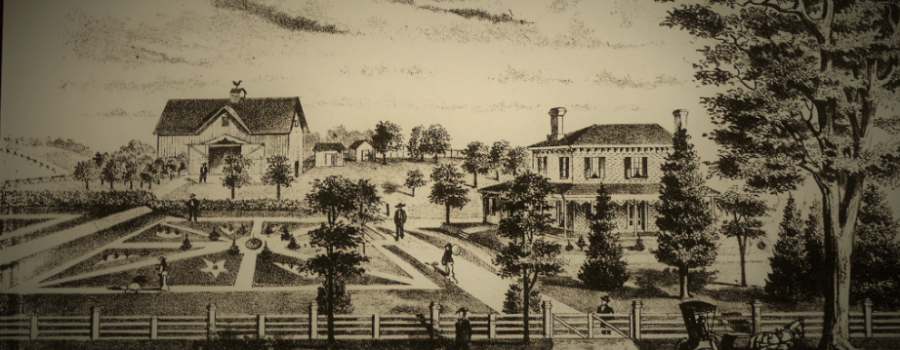Guest Post: fromareportersnotebook
Fonthill’s selection of its site for settlement was no accident. It was isolated from other settlements because their Quaker roots were not compatible with being involved in the conflict with the Americans during the War of 1812. Instead, the Taylors, Jennings, Rices, Fosses and others found a reward in the rich agricultural soils that were superior to most areas in the peninsula.
In northwest Pelham just outside Fonthill flowed a never-ending stream of water that supplied power to several mills to grist their grain and make their wool. The power of the glaciers had created an undulating topography here known as the Short Hills while Fonthill was built on a formation called a kame. It commanded a magnificent view of both Lake Erie and Lake Ontario and clouds of mist marking the location of Niagara Falls. On the large tracts of land that were cleared provided perfect opportunities for fruit growing and market gardening.
As time passed, while the agrarian character of the area changed with the introduction of the industrial revolution, Fonthill kept to its roots. The whistle of a train or boat from the Welland Canal could faintly be heard over the winds whistling through the trees and the fragrance of a multitude of fruit and hay in the fields that were in keeping with this community.
Entering the Twentieth Century better roads and the arrival of the Toronto Hamilton and Buffalo railway in Fenwick and the Niagara Falls, St. Catharines and Toronto electric line in the village did improve connections with other communities, Fonthill would not encourage anything more complicated than canning factories and quarrying.
The peaceful and beautifully maintained farm illustrated in the Historical Atlas of Lincoln and Welland Counties by H.R. Page along what was known as Welland Road accents the rural character that was so much a part of Fonthill and its environs until the 1950s.
 Back to myNiagaraOnline
Back to myNiagaraOnline
































